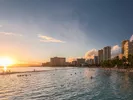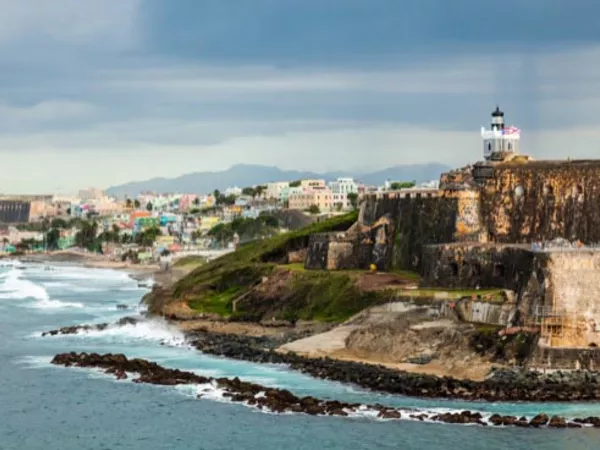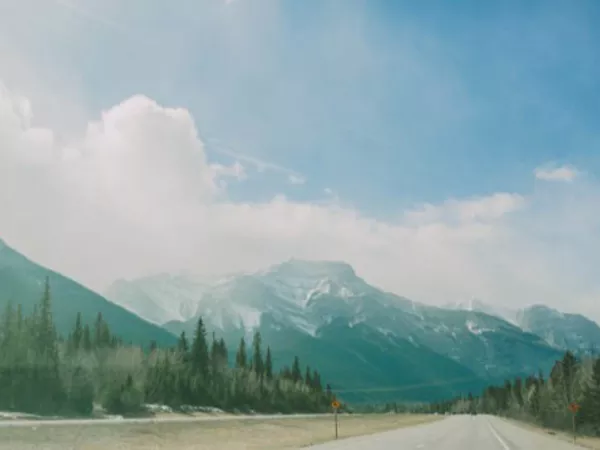By continuing to use this site, you agree to our use of cookies.
Moving To Hawaii
Jan 28, 2025
In:
From the mainland to island life: advice for moving to Hawaii
Seeking a slower-paced lifestyle in paradise? Look no further than Hawaii for a tranquil environment with breathtaking natural beauty and a vibrant culture unlike any other.
Despite being part of the United States, Hawaii is an overseas destination, so relocating there requires more planning than typical state-to-state moves. By choosing U-Pack® to handle your move, you can focus on the fun, like planning for a new lifestyle in one of the world’s top vacation destinations.
Follow along with this guide to prepare for living in the Aloha State.

Overview of Hawaii’s islands and culture
No other U.S. state is surrounded by the ocean. Learning more about the islands and Hawaiian culture is an exciting way to get ready for the move.
The islands
Hawaii is an archipelago of 137 volcanic islands forming 8 main land masses. Two of the main islands, Niihau and Kahoolawe, are uninhabitable.
Privately-owned Niihau is available for descendants of the Sinclair family and their guests or U.S. government officials. Kahoolawe was a bombing test site during World War II. Now, it is a sanctuary and nature preserve used for native Hawaiian spiritual rituals.
Here are some facts about the inhabitable islands:
Hawaii (The Big Island)
- It’s the second-most populous island, with around 200,000 residents
- Almost one-quarter of the residents live in Hilo, the most prominent town and county seat
- It’s home to 4 active volcanoes and another just off the coast submerged in the water
- The west coast Kailua-Kona community is known for gorgeous beaches
- Attractions include Akaka Falls, Hawaii Volcanoes National Park and Panaewa Rainforest Zoo
- The key industries are coffee and tourism
Kauai
- The island is home to just over 73,000 people
- Farming on “the Golden Isle” includes avocados, bananas, coffee, guavas, mangos, papayas, pineapples and sugarcane
- Attractions include Alakai Wilderness Area, Kokee State Park and NouNou Mountain (Sleeping Giant)
Lanai
- The population is just under 3,400, with only one major settlement in Lanai City
- It’s known as the “Pineapple Isle” because of its history as a pineapple plantation
- Larry Ellison of the Oracle Technology Company owns 98% of the land
- The state or private homeowners control only 2% of the land
Maui
- The population is around 168,000 residents
- Maui is the second-largest Hawaiian Island in land mass
- The financial and commercial hub of Maui is the 28,000-person community of Kahului
- There is one active volcano on the island
- With over 3 million visitors annually, tourism is the most popular business
- Attractions include Haleakala Crater, Hookipa Beach Park and Maui Ocean Center
Molokai
- There are 7,300 residents on the “Friendly Isle”
- The economy is centered around cattle ranching and farming (pineapple and sugarcane)
- George Murphy Beach Park, Kakahaia National Wildlife Refuge, Forest Reserve and Palaau State Park are notable attractions on the island
Oahu
- Home to the state capital of Honolulu, Oahu is the most populous island, with 1.02 million residents
- It’s the third-largest Hawaiian Island by land mass
- The island is the most popular tourist destination
- Attractions include the Honolulu Museum of Art, Pearl Harbor National Memorial, and Waikiki Beach
Culture
A key part of Hawaiian culture is the Aloha Spirit, which embraces love, compassion and peace. Kindness, unity and harmony with people and nature are key elements, and respecting those will help you acclimate.
Native language
Understanding some Native Hawaiian phrases will help show respect for the people. Here are several to know:
- Aloha: hello, goodbye, love, compassion
- Kai: sea or ocean
- Mahalo: thank you
- Malama: to care for or preserve
- Mana: spiritual energy
- ‘Ohana: family
Sacred land and rituals
Land and nature are sacred in Hawaii. Respect the natural elements by keeping them clean. Rituals, including the hula dance, honor the land and the Islands’ history.
Paranormal legends and haunting happenings
The Islands have multiple paranormal legends. Iolani Palace is rumored to be haunted by monarch spirits. Legends like the Night Marchers of Kauai and Oahu and the Legend of Pele are also prominent. Many of the stories contain reminders to respect nature.
Living in Hawaii
Living on a tropical island differs from residing in the continental U.S. Know what to expect before arriving.
Climate and geography
The state's tropical climate is warm, with sporadic rain showers. Typical year-round temperatures stay between 65 and 85 degrees.
The Islands can be affected by tropical storms, wildfires and volcano eruptions, so having an emergency plan is essential. There are 6 active volcanoes in the state, located on or near the Big Island and Maui.
Employment
The tourism job market is healthy, but opportunities in other sectors might be limited depending on where you live.
With the rise of remote work during the past few years, many people have chosen to telecommute from Hawaii to enjoy the tropical location. If you’re considering remote work, be aware of the time difference. The state follows Hawaii-Aleutian Standard Time (HST) and doesn’t observe Daylight Saving Time.
Making a military move? Learn more about PCSing to a Hawaiian military base.
Cost of living
Hawaii is more expensive than most other states, and the housing market is highly competitive.
Because of the Islands’ isolated location, shopping works differently. Be prepared for longer wait times when online shopping since goods outside the state must be flown or shipped in. Prices for groceries, fuel and home goods are typically higher than on the mainland.
Daily commutes and out-of-state travel
Roads can be winding to get around natural elements, so driving between two communities takes longer than expected. While public transportation is available in the larger communities of Hilo, Honolulu and Kona, it’s uncommon in other towns.
Regional flights or ferries can help you get from one Hawaiian Island to another, but traveling to the mainland requires more planning. The shortest flight to the mainland (California) takes 5-6 hours.
Education
Most areas of Hawaii have access to public, private and homeschool options for kids. If you have children, you’ll want to consider the local schools when buying or renting a home.
The University of Hawaii (8 campuses), Brigham Young University and Hawaii Pacific University serve the state’s adult learners.
How to move to Hawaii with U-Pack
You can’t drive a rental truck across the ocean, so you’ll need to hire a moving company. Often, the best value is a DIY service like U-Pack®.
With U-Pack, you pack, load and unload to save money. We’ll ship your things overseas in one or more of our ReloCube® moving containers.
ReloCubes are available for door delivery in Oahu and Hawaii (the Big Island) and for unloading at the service centers in Maui and Kauai. Here’s how the process works:
- We deliver the equipment to your home
- You have up to three business days to load
- We pick up the loaded equipment and transport it to California
- The shipping containers sail from California to Honolulu
- Your belongings travel from Honolulu to the final destination (or unload at the service center)
- The entire transit time averages just 9-16 business days
Need storage or moving labor?
You can add storage if needed. Depending on availability, storage will be at origin, in California or at the service center in Honolulu.
U-Pack can refer you to experienced local moving crews for help loading and unloading. Just let us know!
Other Hawaii relocation information
Here are some other special situations you might encounter when moving to the Paradise of the Pacific:
Shipping a car, motorcycle or scooter to Hawaii
U-Pack can ship motorcycles, scooters, ATVs and lawnmowers inside the ReloCube (as long as the fuel is drained), but our equipment is not designed for moving cars.
We recommend Mr. Car Shipper® to transport a vehicle. Call 877-528-9627 to get a quote.
Moving with pets
Pets can’t travel in the moving equipment, so they’ll travel on the plane with you. Contact your airline for specific rules and regulations. The state requires proper health certificates for importing animals. Check our guide for moving pets to Hawaii for more information.
Transporting houseplants
Live vegetation is not allowed in U-Pack containers. Follow the State of Hawaii Plant Industry Division guidelines for shipping plants to your new home.
U-Pack can help you relocate to the Aloha State
Hawaii moving costs can be more expensive than moves within the continental U.S. You can save money by using U-Pack’s budget-friendly service and downsizing belongings before the move to decrease the shipment size.
Most U-Pack quotes are instant, but moves to Hawaii are more complex and require a moving consultant’s review. You can start your quote online and provide an email address so we can get back to you with a price once we’ve double-checked all the details.
If you’d prefer to speak directly to a consultant, call 844-362-5303844-594-3077. Someone will be happy to help you plan your move and provide a quote.
Questions?
Let us know in the comments if you have questions about moving to Hawaii with U-Pack.
Need to move to the mainland? U-Pack can help with moves from Hawaii.
More articles you might like...



